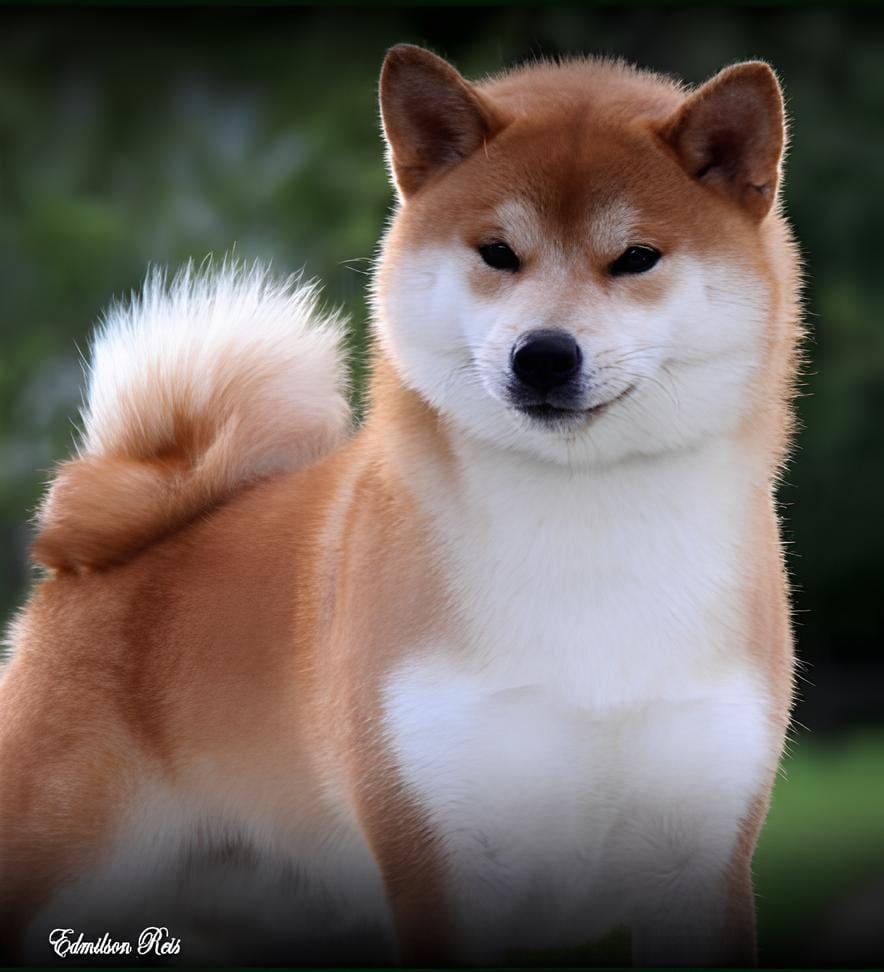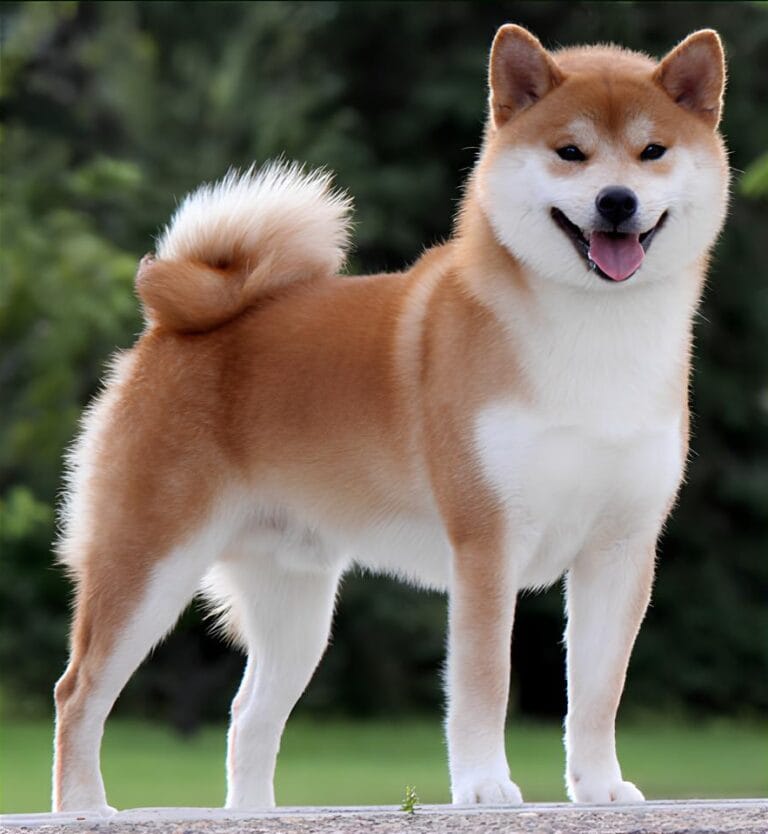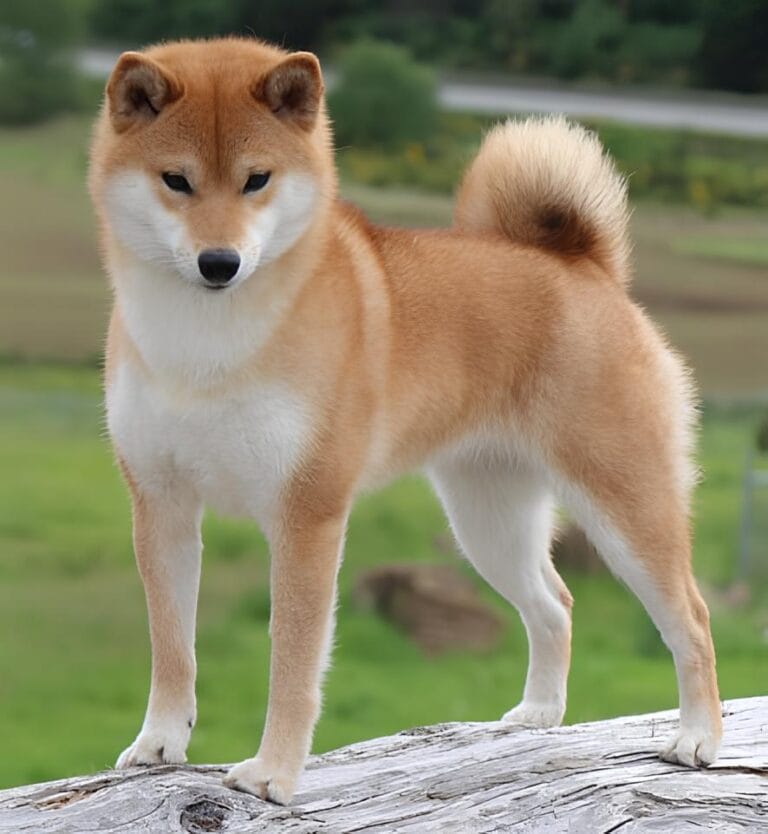

Ideal Height: Dogs 39.5 cm (15.5 in), bitches 36.5 cm (14.25 in). For the purposes of judging, Dogs under 38 cm (15 in) and over 42 cm (16.5 in); Females under 34 cm (13.5 in) and over 38 cm (15 in) shall be disqualified.
Double-coated, with the outer coat harsh and straight, and undercoat soft and dense. Guard hair approximately 3 cm (1 in)” on body, 4-5 cm (1.5 – 2 in) on withers. Hair short and even on face, ears, and legs. Hair on tail slightly longer and forms a bristle, not a plume. Serious Fault-long or woolly coat.
Colour: Red, Sesame, Black and Tan. These are the only acceptable colours, and are to be given equal consideration. Colour is clear and intense, with undercoat of cream, buff or gray. "Urajiro" (creamy white ventral colour) is required on all three allowed colours, in these areas: side of muzzle, cheeks, inside ears, on underjaw and upper throat, inside of legs, on abdomen, around vent, ventral side of tail. Cream does not extend over nasal bridge. Cream spots above eyes, on tip of tail, and on forechest permitted but not required. White markings known as socks permitted but not desirable. Spots of colour in the urajiro are highly undesirable. "Reverse mask" (all cream/white face) is a fault.


Thick and muscular, blends into shoulders. No dewlap.
The shoulders moderately sloping, well developed. The elbows set close to body, and forearms straight. The pasterns slightly inclining. Feet are catlike with well-arched toes fitting tightly together and thick pads. The nails hard and darker colour desirable. Front dewclaws may be removed.
Body is tight-skinned and well muscled. Height to length ratio of 10 to 11, measured from withers to ground, and point of shoulder to point of buttock. Bitches may be slightly longer. Chest depth from withers to elbow one-half or slightly less of total height. The chest deep, ribs moderately sprung. Back straight and short, the loins broad and muscular, the abdomen firm and well tucked-up.
The upper thighs long, and lower thighs short and well developed, with a wide natural stance. Angulation in balance with the forequarters. The hock joint strong. No dewclaws. Feet as in front.
Strong thick root, set high, carried in a loose curl, or curved as a sickle over back. The tip nearly reaching hocks when let down. Hair on tail slightly longer and forms a bristle, not a plume.
Light, quick and elastic. Forward reach and rear drive are moderate. Viewed from the front or rear, there is a tendency to single track. Topline remains level and firm.

Light eye colour.
Level or extremely overshot bite.
1 to 4 missing teeth.
Reverse mask
Long or woolly coat is a serious fault
Dogs under 38 cm (15 in) and over 42 cm (16.5 in); Females under 34 cm (13.5 in) and over 38 cm (15 in)
Coat colours other than described.
Ears not pricked.
Tail not carried over back.
5 or more missing teeth, but with the molars (M3) not taken into consideration.
Undershot bite.
Effective January 1, 2025.